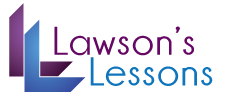Is it right or wrong?
Ethical Communication
Objective: Students will create ethical or unethical dialogs and analyze their dyad communication in order to identify ethical and unethical communication
Material: A teacher— randomly draws with various situations
Steps:
1. Students are paired up
2. Each pair draws a blank sheet of small paper with a ‘particular’ situation
3. Pairs create either an ethical or unethical short dialogue according to their particular situation and discuss why it is ethical or not
4. One pair presents their dialogue in the class
5. Other pairs guess whether it is ethical or not and answer it
6. The pair who presented in front of students offer their answers of why their dialogue is ethical or not and the reason
7. The next pair comes to the front and repeats the same activity and etc. until every group finishes
8. A teacher picks up some students’ dialogues to use as classroom discussions
9. Students think of situations which reverse their opinion whether it is an ethical or unethical communication
10. Students share the situations they come up with.
Result: Students will judge ethical communication and cultivate their knowledge of ethical communication.
Yuriko Onishi
Fall 2007
Is it Ethical?
Ethical Communication
Objective: The students will realize the significance of ethical communication.
Materials: None.
Steps:
1. Engage in a class discussion about ethics. The teacher may use the following as a guide for the discussion or may alter the questions:
o What are ethics?
o How are ethics determined? (Who or what determines the standards?)
o What are the ethical standards or norms in our culture?
o Why is it necessary for the speaker to be ethical?
o What does it mean to be an ethical speaker?
o What does it mean to be an ethical listener?
o What are the dangers of being unethical speakers and listeners?
2. In the remaining 15 or 20 minutes of class, give the students the following notes:
• “Let men be on their guard against those who flatter and mislead the multitude.” Aristotle
• Ethics- beliefs, values, and moral principles by which people determine what is right or wrong, fair or unfair, just or unjust, honest or dishonest.
• Ethical decisions- weighs potential courses of action against a set of ethical standards or guidelines.
• Ethical norms- a common code for what is and what is not ethical behavior.
• Ethical communication- speaking honestly and truthfully with a thoughtful and genuine concern for the well-being of the audience and community, the audience is responsible too.
o Ethical speaking
♣ Reflects one’s values and character
♣ Develop clear, responsible goals for the speech
♣ Use sound evidence and reasoning
♣ Be aware of differences in others
♣ Be honest
♣ Do not plagiarize
♣ Do not mislead your audience
♣ Cite sources
o Ethical listening
♣ Listen open-mindedly during the speech
♣ Suspend judgment until speech is done
♣ Provide feedback to speaker (verbal & non-verbal)
♣ Detect false messages and fallacious reasoning
♣ Critique the content of the speech:
♣ Was the argument logical? Did it provide sound reasoning?
♣ Did the speaker use emotional appeals to compliment one’s message?
♣ Were emotional appeals used to make up for lacking arguments?
Results: The students will be able to become ethical speakers and listeners.
Carrie Miller
Fall 2009
Ethical Communication
How to Say What you Want Right!
Objective:
After a Power Point and activity, students will be able to understand and incorporate proper ethical perspectives into their speeches with analysis of their audience.
Materials:
Teacher needs to have Ethical Power Point cued up, and ready to go.
The teacher needs to have examples on slips of paper put in a hat – one for every student in you class. Both good and bad examples need to represented for the demonstration.
Steps:
1. The teacher will start off the day with a Journal Topic over “What do students believe ethical communication consists of, and provide one example to back up your argument?”
The students will receive about 10 – 15 minutes to complete writing in their journals. This topic will help the students began to think in a way of ethically communicating with others, and it will give the teacher an idea of what students believe this topic means.
2. A short class discussion will follow with volunteers reading their journal entry aloud to the class. Probably only about three or four students need to do this, which will take about 10 minutes.
3. Next the teacher will present the students will the Ethical Communication Power Point.
This will probably take the reminder of the class time: around 35 minutes.
Results:
Homework: Students will come to class with 5 examples from the Ethical Perspectives on pieces of paper to be put in the hat, and drawn out and presented to the rest of the class.
Objective:
Same
Materials:
Same
Steps:
1. Teacher will pick up where yesterday left off. Students will come into class and give the teacher their five examples of Ethical Perspectives and put them in the hat. Then mix up all the pieces of paper, and have each student draw one. 10 minutes
2. Then each student will get in front of the class and present the topic they drew. The class will then decide as a whole
1. Which perspective it was?
2. If that was a positive or negative example?
This activity should take the reminder of the class time, depending on the size of your class.
Results:
Students should understand Ethical Communication and how it is affected by your speech. Students will be responsible for looking over their current speeches, and making sure they are not using any negative ethical communication.
